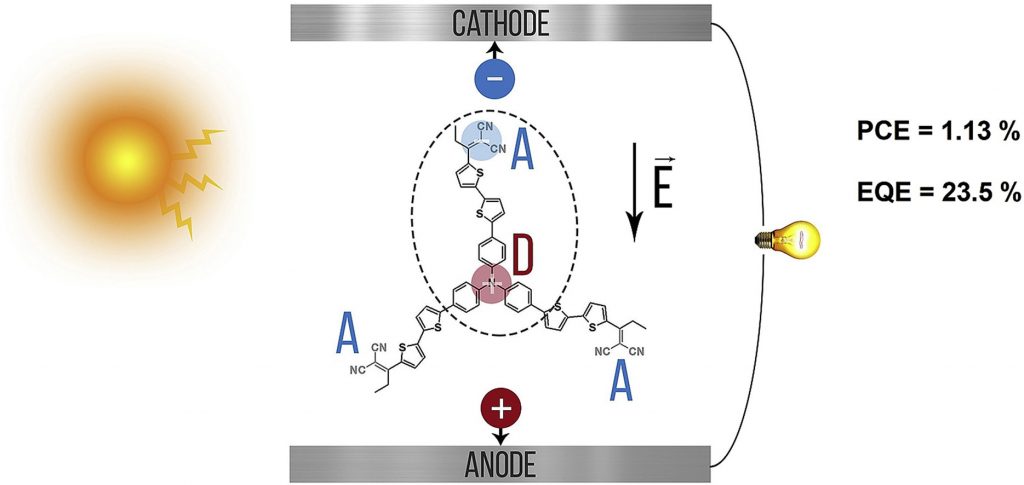Charge photogeneration and recombination in single-material organic solar cells and photodetectors based on conjugated star-shaped donor-acceptor oligomers
Artur L. Mannanov, Petr S. Savchenko, Yuriy N. Luponosov, Alexander N.Solodukhin, Sergey A. Ponomarenko, Dmitry Yu. Paraschuk.

Single-material organic solar cells (SMOSC) are attracted by their simple structure and ease of fabrication so that they are virtually free from a number of drawbacks of heterojunction organic solar cells. However, the performance of SMOSC is still low, first of all because of poor understanding of losses on the way of energy conversion from light to electricity. In this work, we present solution-processed SMOSC based on star-shaped π-conjugated donor-acceptor oligomers with triphenylamine donor (N-Ph3) and alkyl- or phenyl dicyanovinyl acceptor (DCV-R) of general formulae N(Ph-nT-DCV-R)3, where nT stands for n-oligothiophene, and study charge photogeneration and recombination in them. SMOSC demonstrate small energy losses resulting in high open-circuit voltage of 1.08–1.19 V and the power conversion efficiency up to 1.22% under illumination intensity of 0.45 sun (1.13% under one sun) with the maximum external quantum efficiency up to 24% for N(Ph-2T-DCV-Ethyl)3, which are among the highest for SMOSC based on conjugated donor-acceptor small molecules or oligomers. It was found that monomolecular recombination dominates at the short-circuit condition and the maximum power point, but at the open-circuit condition the photoinduced charges recombine nearly bimolecularly. The bottleneck in the SMOSC performance was shown to be the field-assisted charge generation perfectly described by the Onsager model in the limit of weak electric fields. The results obtained suggest that intermolecular charge delocalization in conjugated donor-acceptor molecules would be beneficial for further progress in SMOSC.
